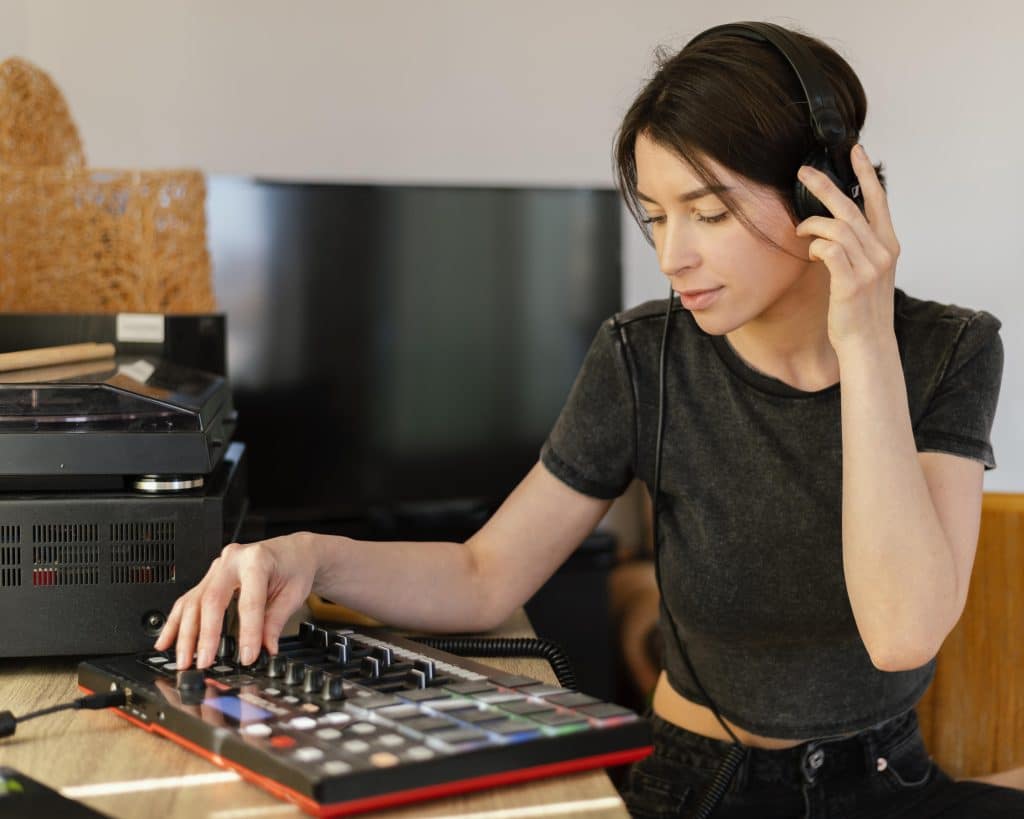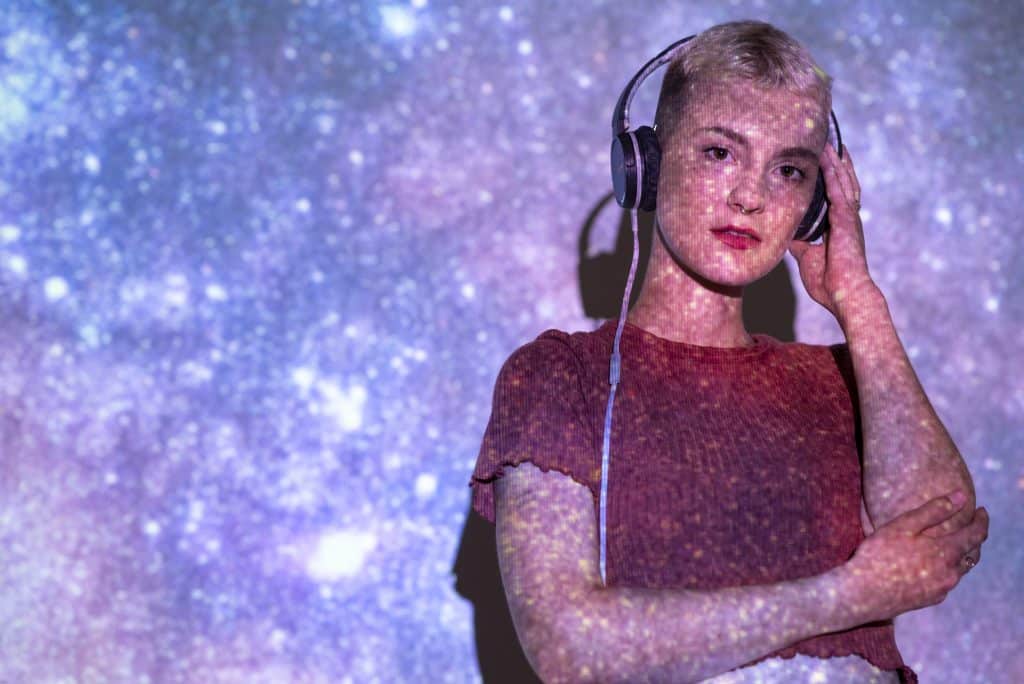Power of sound design: Crafting emotional resonance through audio

The power of sound design lies in its unparalleled ability to deeply craft emotional resonance. It subtly influences audience perception and elevates narratives across diverse artistic and commercial mediums.
Have you ever wondered why certain scenes in movies or moments in video games linger in your mind?
Often, the unsung hero behind this profound connection is the meticulous art of the power of sound design.
It transcends background noise, becoming a storytelling tool that shapes emotions, guides focus, and immerses us fully.
The unseen architect: How sound shapes perception
Sound design is an unseen architect, constructing the acoustic environment that dictates how we perceive visuals.
It’s not just what we hear, but how those sounds are manipulated, layered, and presented for impact.
From a distant hum to a dramatic crash, every auditory cue is a deliberate, artistic choice. A quiet room can feel serene or unsettling depending on subtle sounds, or their absence.
The power of sound design allows creators to transcend visuals, speaking directly to our subconscious.
Beyond realism: Enhancing narrative and atmosphere
One primary function of the power of sound design is enhancing narrative through atmosphere.
Horror films rarely use realistic sounds; instead, they craft tension and evoke dread. A wolf’s howl isn’t just a sound, it’s isolation and danger projected onto the audience.
This deliberate construction of auditory space makes us feel inside the story itself.
Guiding attention and building tension
Sound guides attention like light or camera angles. Through volume, timbre, and directionality, the power of sound design highlights plot points or emotions.
The subtle increase of a ticking clock or rustle of leaves raises tension effortlessly.
By controlling auditory pacing, sound builds arcs of suspense without a single visual cue.
The physiology of emotion: How sound interacts with our bodies
To grasp the power of sound design, one must see its physiological impact. Sound resonates through our entire body, triggering emotional and physical responses.
Low frequencies induce dread, while high tones spark excitement or agitation.
Our nervous system is wired to react, making sound one of the strongest emotional triggers.
Frequencies and their emotional impact
Low bass conveys weight and impending doom. Mid frequencies carry voices and melodies, the core of emotional communication.
High frequencies bring sparkle or sharpness, shifting moods instantly.
The careful balance of these layers is where the power of sound design becomes undeniable.
Rhythm, tempo, and the heartbeat of narrative
Our heartbeat links us naturally to rhythm. Fast tempos spark anxiety or excitement, while slow rhythms build suspense or calm.
Strategic silence, too, has profound weight, amplifying tension or revealing truth.
Here again, the power of sound design proves its ability to control emotional flow.

Beyond the screen: Sound design in everyday life
The influence of sound extends far beyond cinema or gaming. From smartphone chimes to retail ambiance, the power of sound design shapes our daily emotions.
The click of a car door or oven chime isn’t random, it’s deliberately crafted assurance.
These micro-sounds influence trust, quality perception, and brand identity in daily life.
Product design: The sound of quality and user experience
Auditory feedback is key in product design. A tactile button click or distinctive notification tone builds user satisfaction.
The power of sound design ensures even utilitarian objects feel intuitive and premium.
A poorly designed sound frustrates, while a crafted one elevates daily interaction.
Architectural acoustics and public spaces
Architecture, too, is shaped by intentional sound. The hush of a library or echo of a hall affects comfort and engagement.
Public spaces use the power of sound design to mask noise or create calm sanctuaries.
Even fountains in lobbies are deliberate acoustic choices enhancing human experience.
The tools of the trade: Crafting soundscapes
Creating immersive soundscapes blends artistic vision with technical mastery. Sound designers rely on DAWs, plugins, foley, and field recordings to craft depth.
Every layer adds richness, proving that the power of sound design is both technical and artistic.
This process builds worlds of sound, both real and fantastical.
Digital audio workstations (DAWs) and plugins
DAWs like Pro Tools and Logic provide the core framework. Plugins expand creativity, manipulating tones and generating unique textures.
The power of sound design lies in this digital canvas, where imagination meets precision. It enables sonic artistry with limitless possibility.
Field recording and foley artistry
Field recordings bring authenticity, grounding soundscapes in reality. Foley artistry recreates footsteps, creaks, or glass breaking with precision.
These tactile details reveal the power of sound design to immerse us completely.
What we hear is often more real than on-set recordings.

The evolution of sound design in media
From cinema’s early days to VR, sound has transformed. Once functional, it’s now central to narrative and emotional depth.
The power of sound design has grown with technology, becoming indispensable to storytelling. Surround sound and spatial audio expanded immersion beyond imagination.
From functional to experiential: A historical perspective
Walter Murch showed sound could drive narrative, not just support it. Games evolved from chiptunes to dynamic, adaptive soundscapes.
This history underscores the power of sound design as a storytelling force. It is no longer secondary, it is central to immersion.
The interactivity of sound in gaming and VR
In gaming and VR, sound actively shapes user experience.
Spatial audio creates visceral realism, while cues guide gameplay. Here, the power of sound design becomes interactive, personal, and responsive.
Each player experiences unique auditory journeys.
Ethical considerations and the future of sound
With great influence comes responsibility. The power of sound design raises questions about manipulation, overload, and well-being.
Designers must enrich rather than exploit, considering user health and agency. Sound should uplift, not overwhelm.
Responsible sound design: Avoiding manipulation and overload
Ethical sound avoids subliminal manipulation or harmful cues. It prioritizes clarity, serenity, and inclusion for sensitive groups.
This responsibility ensures the power of sound design is used for good. Sound must support human experience with integrity.
The future landscape: AI, haptics, and beyond
AI generates adaptive, dynamic soundscapes in real time. Haptics merge touch and sound, intensifying immersion.
The power of sound design will evolve into multi-sensory experiences.
Personalized, intelligent sound will shape the future of media.
The underrated artform: Sound as an emotional language
Sound is its own emotional language, conveying nuance beyond visuals. Silence and subtle textures can shift entire perceptions of a scene.
This highlights the enduring power of sound design as pure narrative communication. It speaks directly to empathy and immersion.
Sound as a foundation for immersion and empathy
Immersion isn’t just about realism, it’s resonance. Soundscapes make us feel present, empathetic, and emotionally invested.
The power of sound design creates empathy by aligning us with characters. It deepens suspension of disbelief through authenticity.
The collaborative nature of sonic storytelling
Sound design thrives on collaboration with directors, composers, and editors. It informs rhythm, pacing, and emotional flow across the entire production.
This synergy is where the power of sound design achieves its greatest impact. It becomes a foundational pillar of storytelling itself.
In the end, the power of sound design is unmatched in shaping emotion and immersion.
Evokes, communicates, and resonates long after the story ends, silently orchestrating our feelings.
| Key Aspect | Brief Description |
|---|---|
| 🎨 Emotional Resonance | Sound design evokes deep emotions, subtly guiding audience feelings and perceptions. |
| 🧠 Physiological Impact | Frequencies and rhythms interact with our brains, influencing mood and physical responses. |
| 🌟 Immersion & Narrative | Crucial for creating believable worlds and enhancing storytelling across all media. |
| 🛠️ Tools & Techniques | Leverages DAWs, field recording, and Foley artistry for diverse sonic landscapes. |
Frequently Asked Questions (FAQ) about power of sound design
The main goal of sound design is to craft an immersive and emotionally resonant auditory experience that enhances the narrative and deepens audience engagement. It moves beyond just realistic sounds to evoke specific feelings and guide perception, making the story more impactful and memorable for the viewer or player.
Sound design affects human emotions by manipulating auditory cues like frequency, rhythm, and volume, which interact directly with the brain’s limbic system. For instance, low frequencies can induce dread, while rapid tempos can create excitement, subtly influencing mood and triggering physiological responses that deepen emotional connection.
Sound designers primarily use Digital Audio Workstations (DAWs) like Pro Tools or Logic Pro for editing and mixing. They also rely on field recording to capture authentic sounds from real environments and Foley artistry to create specific, synchronized effects like footsteps or cloth rustling, blending realism with creative manipulation.
In video games and VR, sound design has evolved from simple linear cues to highly interactive and adaptive audio systems. Sounds now dynamically respond to player actions and environmental changes, providing crucial feedback and enhancing immersion through advanced spatial audio, making virtual experiences feel incredibly real and deeply engaging.
Ethical sound design is crucial because sound has the power to subtly influence emotions and behaviors, raising concerns about manipulation. Responsible designers avoid subliminal cues, reduce noise pollution, and prioritize user well-being, ensuring sound enhances experiences without exploiting vulnerabilities or causing auditory overload in an increasingly noisy world.





